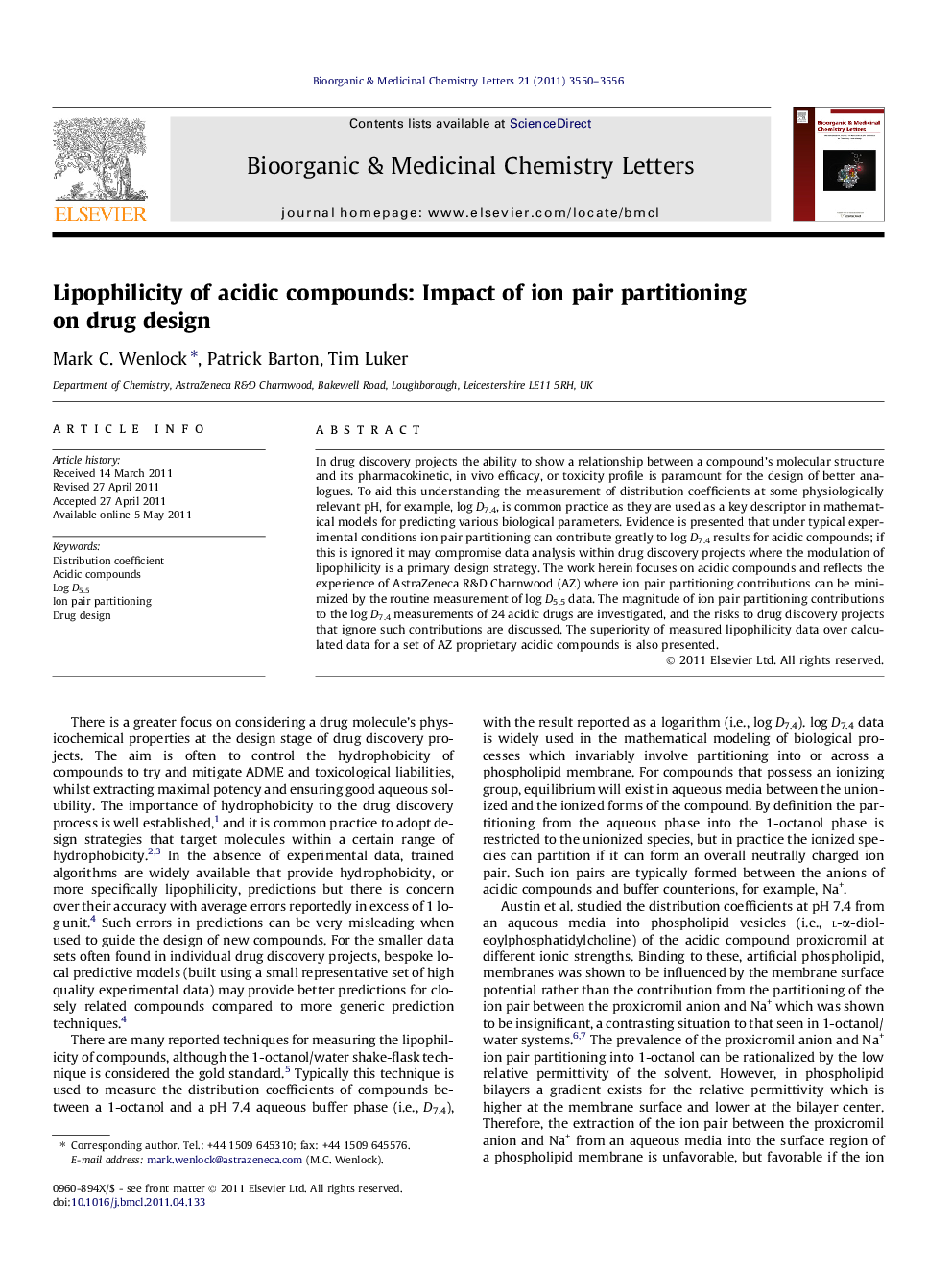| Article ID | Journal | Published Year | Pages | File Type |
|---|---|---|---|---|
| 1370792 | Bioorganic & Medicinal Chemistry Letters | 2011 | 7 Pages |
In drug discovery projects the ability to show a relationship between a compound’s molecular structure and its pharmacokinetic, in vivo efficacy, or toxicity profile is paramount for the design of better analogues. To aid this understanding the measurement of distribution coefficients at some physiologically relevant pH, for example, log D7.4, is common practice as they are used as a key descriptor in mathematical models for predicting various biological parameters. Evidence is presented that under typical experimental conditions ion pair partitioning can contribute greatly to log D7.4 results for acidic compounds; if this is ignored it may compromise data analysis within drug discovery projects where the modulation of lipophilicity is a primary design strategy. The work herein focuses on acidic compounds and reflects the experience of AstraZeneca R&D Charnwood (AZ) where ion pair partitioning contributions can be minimized by the routine measurement of log D5.5 data. The magnitude of ion pair partitioning contributions to the log D7.4 measurements of 24 acidic drugs are investigated, and the risks to drug discovery projects that ignore such contributions are discussed. The superiority of measured lipophilicity data over calculated data for a set of AZ proprietary acidic compounds is also presented.
Graphical abstractFigure optionsDownload full-size imageDownload as PowerPoint slide
